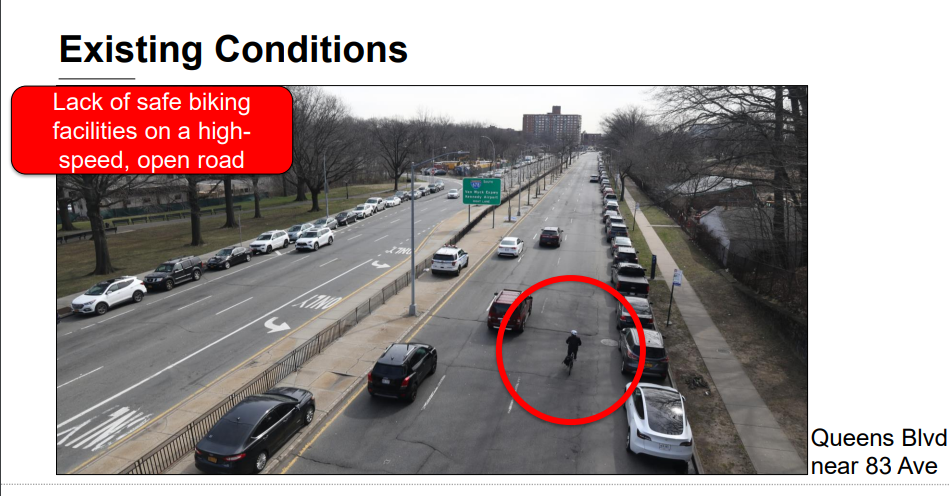The Queens Boulevard Bike Lane Extension: Promoting Safety and Equity
 Queens Boulevard in New York City has been historically notorious for its high number of fatal bicycle accidents and pedestrian accidents. The thoroughfare gained the infamous nickname “Boulevard of Death” due to the significant risks it posed to cyclists and pedestrians.
Queens Boulevard in New York City has been historically notorious for its high number of fatal bicycle accidents and pedestrian accidents. The thoroughfare gained the infamous nickname “Boulevard of Death” due to the significant risks it posed to cyclists and pedestrians.
After almost a decade of planning, the New York City Department of Transportation (DOT) announced that the infamous boulevard is finally undergoing a transformation with the extension of bike lanes further east into the Borough. This long-awaited project aims to improve street safety and create a more equitable transportation system. As NYC bicycle accident lawyers, we view this expansion as a positive step towards reducing accidents and promoting safety for pedestrians, cyclists, and bus commuters.
The DOT recently presented a comprehensive proposal to extend bike lanes on Queens Boulevard. The plan involves repurposing a travel lane in each direction between Union Turnpike in Forest Hills and Hillside Avenue in Briarwood. This move has been applauded by advocates who appreciate Mayor Adams’ commitment to bringing safer infrastructure to communities of color.
The initiative to revamp Queens Boulevard faced significant opposition and delays. Originally planned in 2015, the project encountered resistance from community board members who were hesitant to change the car-centric status quo. Despite these obstacles, substantial progress has been made along the boulevard, with most sections completed, albeit on a revised timeline.
The 1.2-mile eastward expansion will run past Queens Borough Hall and the courthouses in Kew Gardens, extending to Hillside Avenue. To accommodate the bike lanes, DOT will convert a travel lane in each direction into dedicated space for cyclists. Additionally, medians will be extended using paint to provide pedestrians with more space and discourage reckless driving. The plan also includes converting specific lanes into short bus lanes and improving intersections for safer traffic flow.
Queens Boulevard has long been a priority corridor for the Vision Zero initiative, aiming to eliminate traffic fatalities and severe injuries. The proposed bike lanes address the urgent need for safer infrastructure, as the boulevard has seen numerous accidents and injuries. Over the past five years, the designated section for the upgrades has witnessed 233 injuries and over 600 reported crashes, impacting both pedestrians and cyclists.
Despite concerns about safety, existing bike lanes on Queens Boulevard have already proven effective. The current lanes have led to a 34% reduction in injuries, a 42% decrease in pedestrian injuries, and a doubling of the number of cyclists. Additionally, protected bike lanes have significantly reduced pedestrian fatalities and serious injuries by almost 30%, with an even higher reduction among senior citizens.
While the current extension involves painted bike lanes, it sets the stage for future improvements. The DOT plans to continue building raised paths for cyclists and expanding concrete pedestrian space, creating a safer and more visually appealing corridor similar to Eastern Parkway in Brooklyn or Allen Street in Manhattan.
The extension of bike lanes on Queens Boulevard represents a significant step towards improving street safety and promoting equity. Despite challenges and delays, progress has been made in transforming this notorious corridor. By prioritizing the needs of pedestrians, cyclists, and bus commuters, the city is taking proactive measures to create a safer and more inclusive transportation system for all residents and visitors.
Download the presentation of the DOT
Image Source: DOT power point presentation
 New York Personal Injury Attorneys Blog
New York Personal Injury Attorneys Blog


